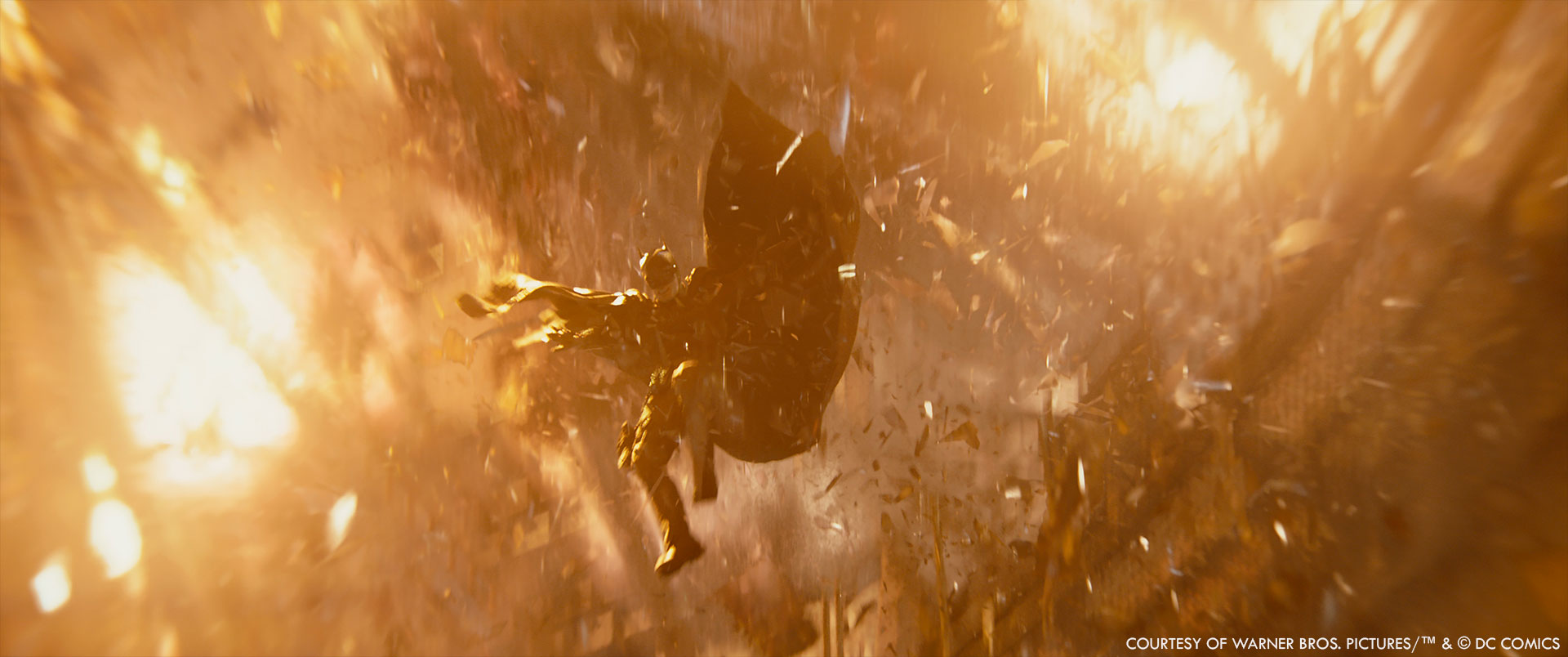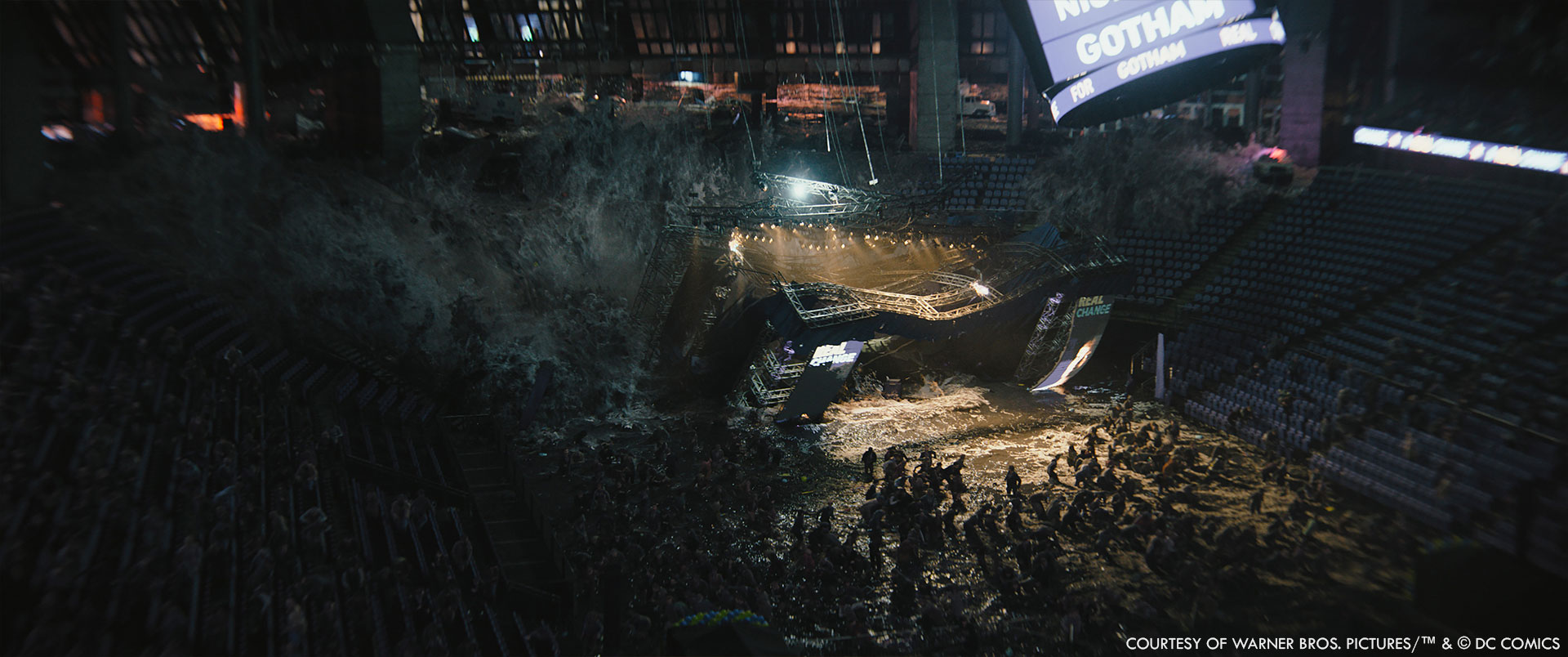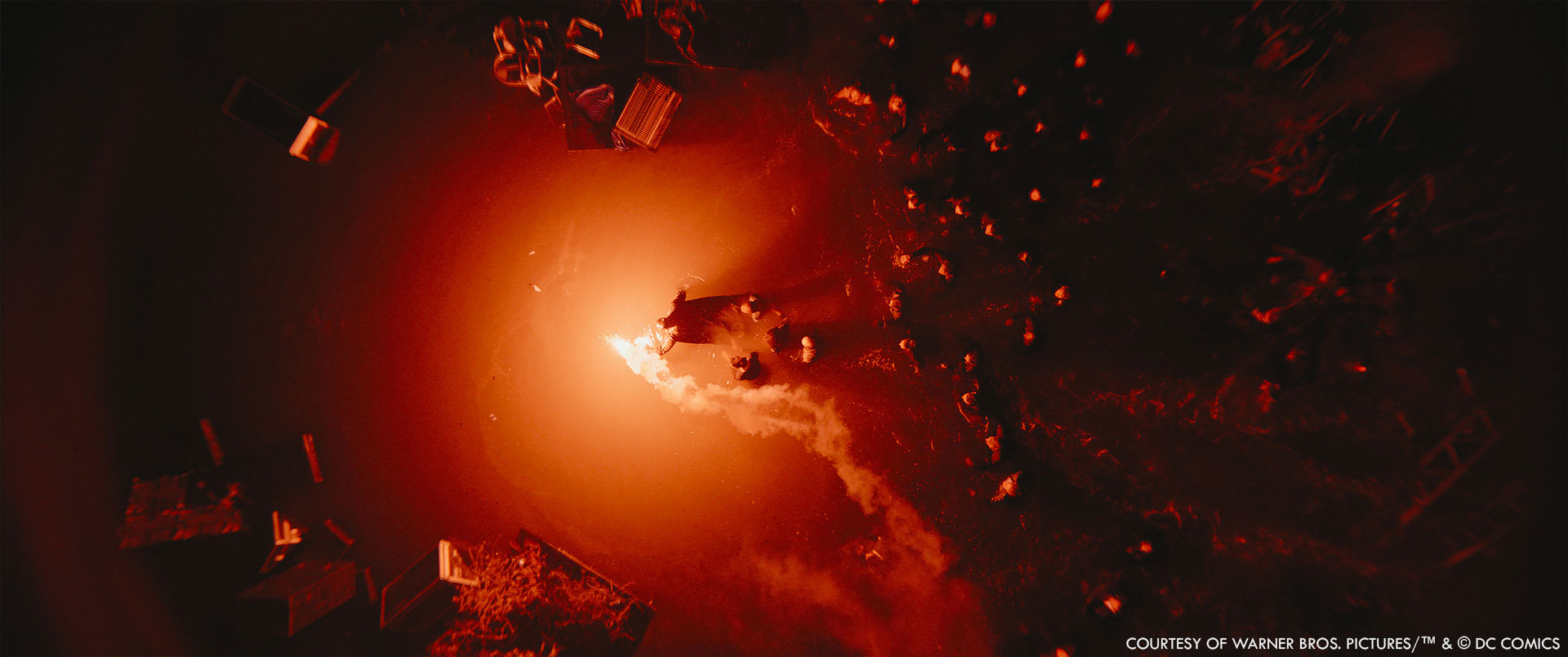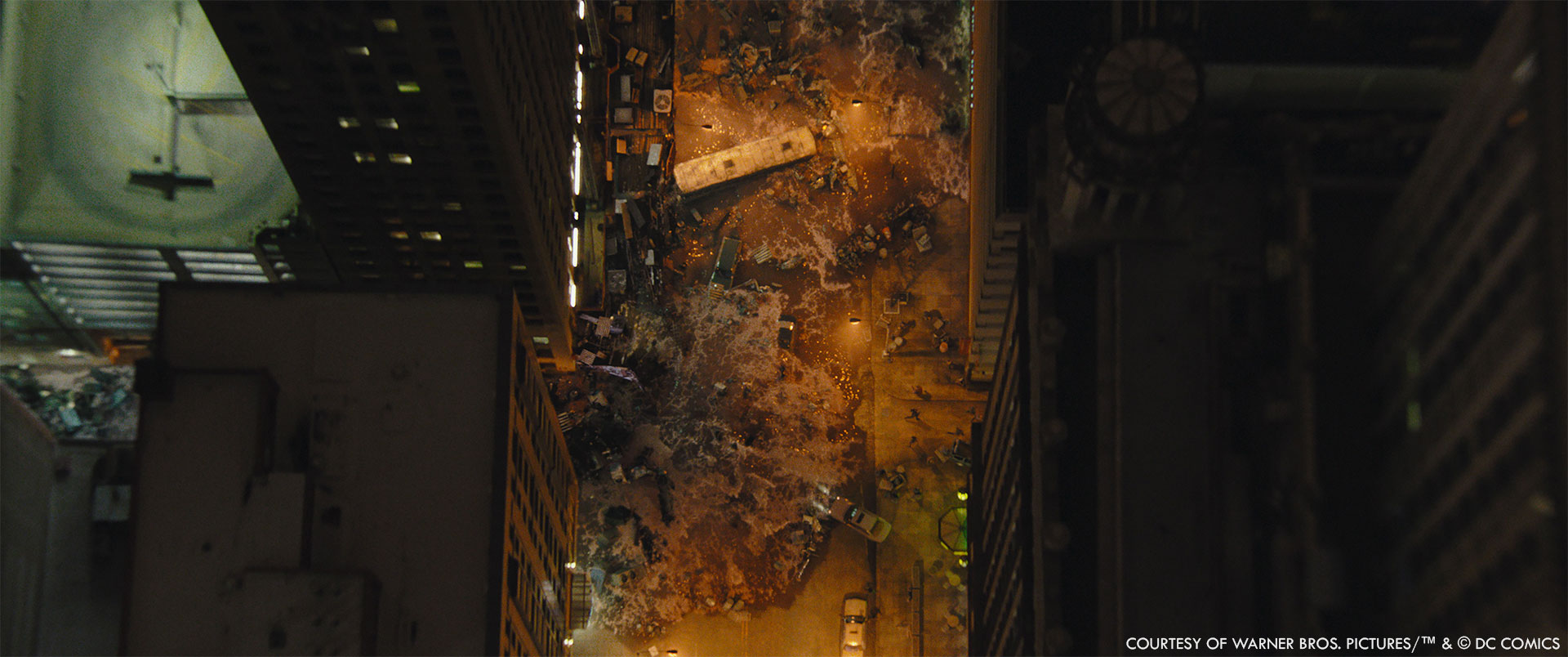Last year, Julius Lechner explained the visual effects work done by Scanline VFX on Zack Snyder’s Justice League. He then worked on Eternals.
How did you and Scanline VFX get involved on this show?
Scanline has a long history with Warner Brothers and working on DC titles and this movie was a great continuation of the collaboration and the timing worked out well. Personally I got involved in late 2019.
What was your feeling to be part of the Batman universe?
I’ve been involved in previous Batman installments before, with the latest one being Zack Snyder’s Justice League. However I never worked on a stand-alone Batman film before. For me it’s always a childhood dream come true as Batman was one of my favourite superheroes as a kid.
How was the collaboration with Director Matt Reeves and Production VFX Supervisor Dan Lemmon?
Simply amazing. Both of them are extremely clear and concise in what they want to see and the reasons for it. I especially enjoy that every pixel has its purpose and was thought about in detail on why it is there and what effect it has on a shot. Nothing is left to chance. And I think the movie really shows how much it paid off.
What were their expectations and approach about the visual effects?
Since a lot of movie was shot practical or with a lot of very well executed invisible effects and our third act sequence was one of the few times blue screens were used extensively, they wanted to make sure our work fit seamlessly with the rest of the movie. That meant not only producing CG that will look real directly in front of camera, but that the compositing work for the final image or the framing of a full CG shot had to look like something that Matt would have shot with Greig Fraser on set. We tried to keep that in mind during every step of shot production. We only used lenses actually used on set based on how Greig would use them. An important visual style of the movie were the interesting characteristics of the lenses used. I love how they draw the eye of the viewer to the center of the screen and the more you analyze what those lenses are actually doing, the more fascinating they are to me. Our blue screen shots were shot largely with cleaner lenses to keep us more flexible downstream and it was a really fun task to emulate the look of Greig’s lenses.
How did you organize the work with your VFX Producer?
Our team was split mainly into two different locations, Vancouver/North America and Munich. VFX Senior Producer Alain Lalanne and I were overseeing the entire production with the two teams focusing on their individual workload.
Our North American supervision and production team was led by CG Supervisor Jonathan Freisler, Compositing Supervisor Miles Lauridsen, VFX Art Director Josiah Howison, Animation Supervisor Mattias Brunosson and Digital Effects Production Manager Richard Romero.
Additional VFX Supervisor Roland Langschwert was overseeing the Munich team alongside VFX Associate Producer Jasmin Hasel and Associate VFX CG Supervisor Björn Lubitz, Associate Compositing Supervisor Christian Walentin and Additional Digital Effects Production Manager Donya Sonker.
Of course our team wouldn’t be complete without all of our incredible artists and production staff that made all those beautiful images possible.

How was split the work between the Scanline VFX offices?
The North American office was primarily focused on the part of the third act inside the arena, while our Munich office handled a broad variety of shots, including the seawall breach and tsunami.
What are the sequences made by Scanline VFX?
Our main body of work was anything inside and around the Gotham Square Gardens Arena, with the exception of the aftermath. We also worked on the flooding shots as well as some of the explosions that breach the seawall. Finally, there were quite a few smaller sequences with invisible effects such as the Catwoman Burglary or parts of the Wingsuit Escape.
Can you explain in detail about the creation of the Gotham Square Gardens?
Gotham Square Gardens was based on the O2 Arena in London for the inside and but was changed quite a bit from the original locations, although there are also plates that were shot on location. But since a large portion of our sequence was shot on a blue screen stage, we needed to have an environment that looks photo-real no matter where we put our camera. The lower parts of the arena largely stayed true to the real place with the exception of the entrance, which was a custom design that also had to be married to the exterior which was based on a building in Chicago. The upper levels, especially the entire rafter- and roof construction, had to be different to support the action beats in the sequence. We needed the big open space in the center of the rafter section with a jumbotron hanging from the ceiling, as well as a glass roof that Batman uses to enter the arena. To construct the rafter section we did actually use parts of the O2 arena as a starting point, to keep certain visual aspects close to the reference. For example the way the air ducts are constructed is to a large degree derived from the actual location. We were provided a production design model early on, that laid out some of the key features of the roof section, which included a circular shaped concrete roof and other features that were relevant to the story. This gave us a good base to start, from where we could then come up with a structurally sound and plausible design and combine it with the main duct layout from the O2 arena. We could then move on from there and add all the detail needed for realism. This included tons of walkways, support beams, cables, electrical boxes, and all kinds of other structural or functional elements that you would typically see in an operational arena.

What kind of references and influences did you received for this environment?
We had lots of on set reference in terms of lidar and texture photography of the O2 arena, the Thompson center in Chicago as well as other arenas that we used as influences. Most crucial though were reference plates that Matt had shot with Greig Fraser in the actual rafters of the O2 arena, lit the way he wanted the sequence to look like. Although we could not use them directly in shots, they were invaluable in conveying the look that Matt was looking for in the sequence.
Where was filmed the interior and exterior scenes?
The scenes outside Gotham Square Garden were shot on a set with the background plates being shot in Chicago. The scenes inside were shot partially on location in the O2 and partially on a blue screen set.
What was the main challenges with this environment?
One major challenge was the sheer amount of geometry that we used to build this environment. It became so heavy that we needed to completely rework the way we load assets into our scenes. Also due to the fact that we had to create this big open space within the rafters, it was actually not that easy to create the look that Matt was looking for initially, simply because the open space brought all the action much closer to the sides of the arena, limiting the depth compared to the reference plates of the original location.
The environment is seen by night. How does that affects your work?
I really enjoyed it as it gives you so many great opportunities to create interesting lighting. Especially in the arena, we had so many different shapes and light sources that we could use to follow the direction Matt and Greig had given us with the references. Also the high contrast with strong light sources puts a lot of emphasis on lens effects, especially with the lenses used on this movie. The structures and bokeh shapes that you get through the defocus are incredibly interesting and were an important creative element. Their shape, intensity, breakup and structure can have such a strong effect on how a shot feels like, so using them to the extent that we did on this movie was lots of fun.

How did you create the various explosions?
We worked on two of the explosion shots where the seawall breaks. For both of them we had plates of a real explosion on set, with a partial build of the surrounding environment. Having real explosion footage as a starting point is always great. From there we expanded the fireballs with CG explosions and replaced the environment with CG to be able to get all the interactivity with the various simulations. As with other effects in the movie, it was important to keep it close to reality and reference real explosions and comparable events like failing dams. It was especially crucial that the viewer can understand and feel the force being exerted by the explosion and that all those different elements – the water, the fires, the fireball itself, the breaking seawall and the surrounding buildings being destroyed feel like one coherent event. As with the tsunamis, a huge part of making it feel real is making all those elements talk to each other to become one.
Can you elaborates about the tsunami creation and animation?
Matt and Dan wanted to make sure that the tsunami feels as real as possible and not exaggerated or over the top. We analyzed a lot of reference together to really reproduce every aspect of a comparable real event. Especially important was the fact that the danger for bystanders increases in a sudden way. You might just see a thin puddle of water at one moment and just seconds later it becomes an extremely dangerous situation. Another aspect that was crucial was that the water and all the debris and cars in it constantly influence each other. Cars that are swept away might get stuck on obstacles and force the water around it, while having more and more trash, debris and other cars pile on top of each other. So our setup was built around a coupled simulation that artists had a lot of creative control over. We wanted to be able to define in an intuitive way the paths the water takes and where debris pieces pile up. At some point during the development we tested our setup against one of Dan’s most important references and recreated it, to see if we could fully reproduce all the factors that he was looking for.

How did you animate the water simulations?
Apart from the tsunami, we still had quite a few other water simulations: The seawall breach, the pooling water in the arena and the flood that followed it as well as one of the aftermath shots. Each one of those required different setups tailored to the specific task, although the arena breach was a modified version of our tsunami setup. Each one of those setups also had its unique challenges. The pooling in the arena for example had to have accurate and detailed interactions with our crowd simulations, which always adds to overall shot complexity, while our big breach had to be worked on with low res blocking simulations and a reliable hi-res setup to not get surprised by changes in the underlying low-res sim.
Can you tell us more about the Gotham orphanage creation?
The orphanage was a real building in the UK and most of what you see in the movie is actually shot on camera. We did some small set extensions and some 2D work, but most of what you see is real.
Which shot or sequence was the most challenging?
I think each sequence had its own challenges but probably the biggest one overall was the big finale since it was a series with very complicated full CG shots. Apart from the technical challenges, fitting these full CG shots seamlessly into a movie that has so much shot in camera was definitely a challenge.
Is there something specific that gives you some really short nights?
Probably the aforementioned finale shots.
What is your favorite shot or sequence?
I’m incredibly proud of what our team has produced on this movie and I don’t really have a favourite shot per se, but I did love the red flare shot shots from the moment we got the plates.
What is your best memory on this show?
The show itself, my team, and the collaboration with Matt, Dan and their team.
How long have you worked on this show?
I was personally on the show for roughly 25 months, although the main production window was about a year.
What’s the VFX shots count?
Our body of work was 217 shots.
What was the size of your team?
About 250 people.
What is your next project?
I’m currently working on Aquaman and the Lost Kingdom, which I can’t wait for the world to see.
A big thanks for your time.
© Vincent Frei – The Art of VFX – 2022






